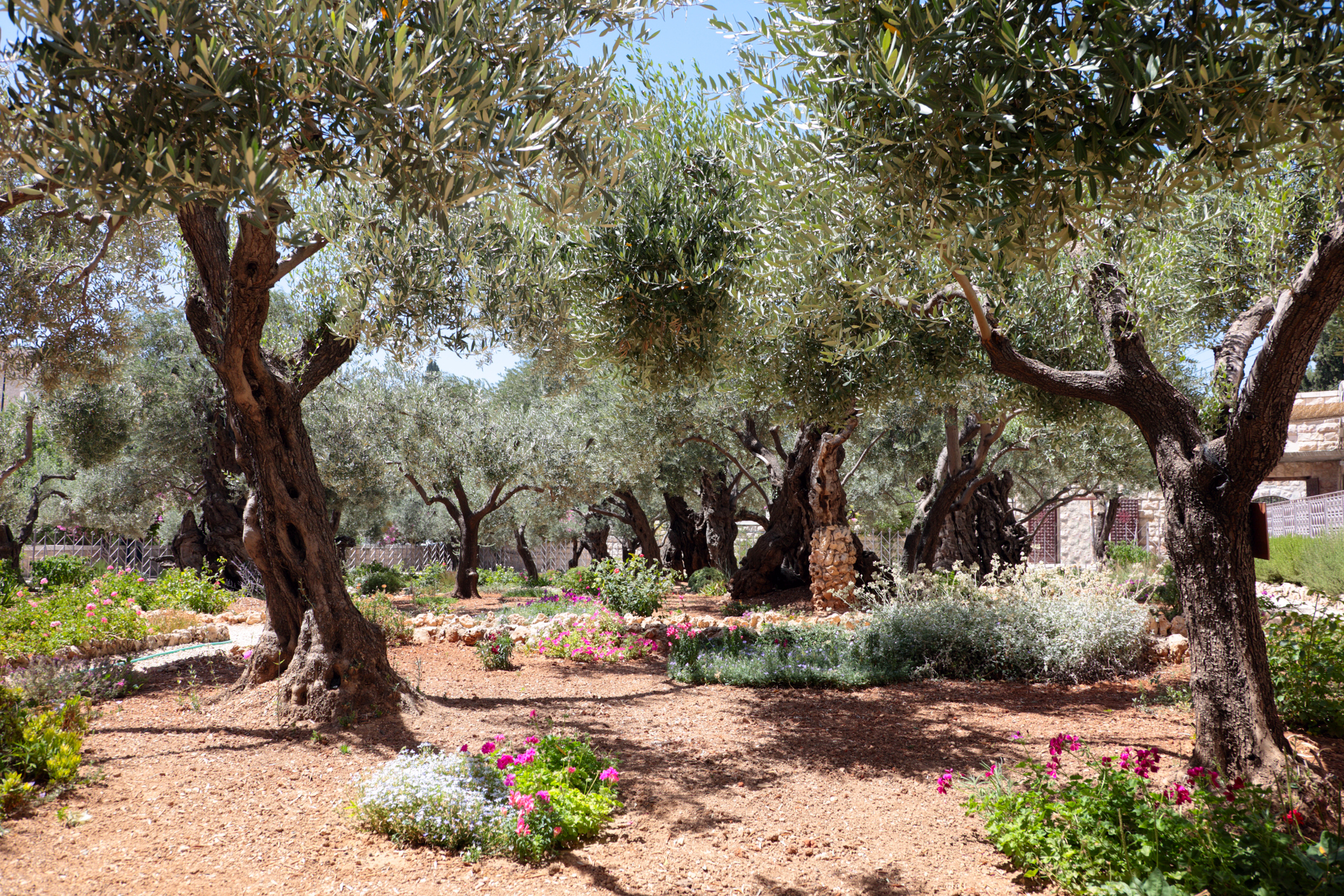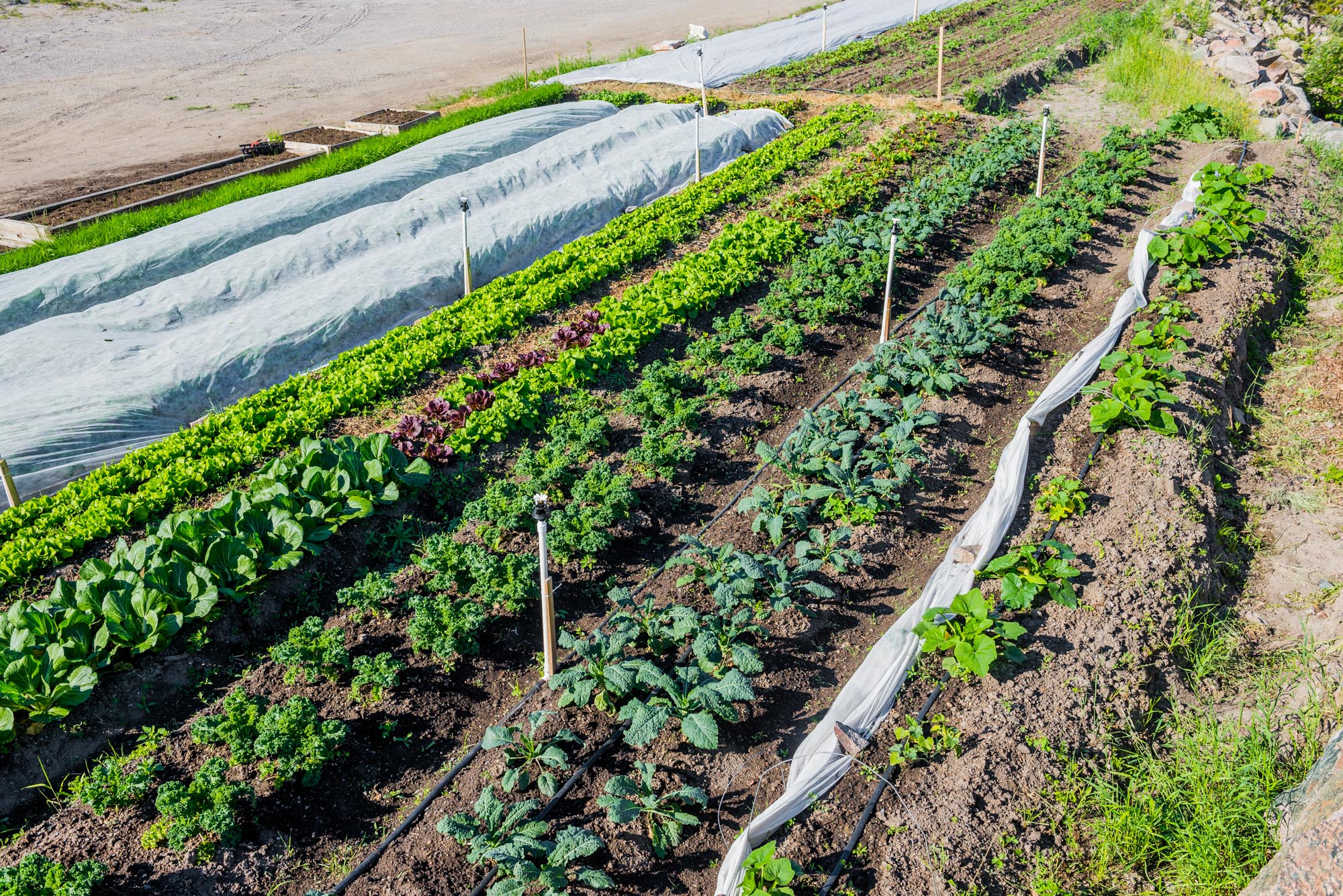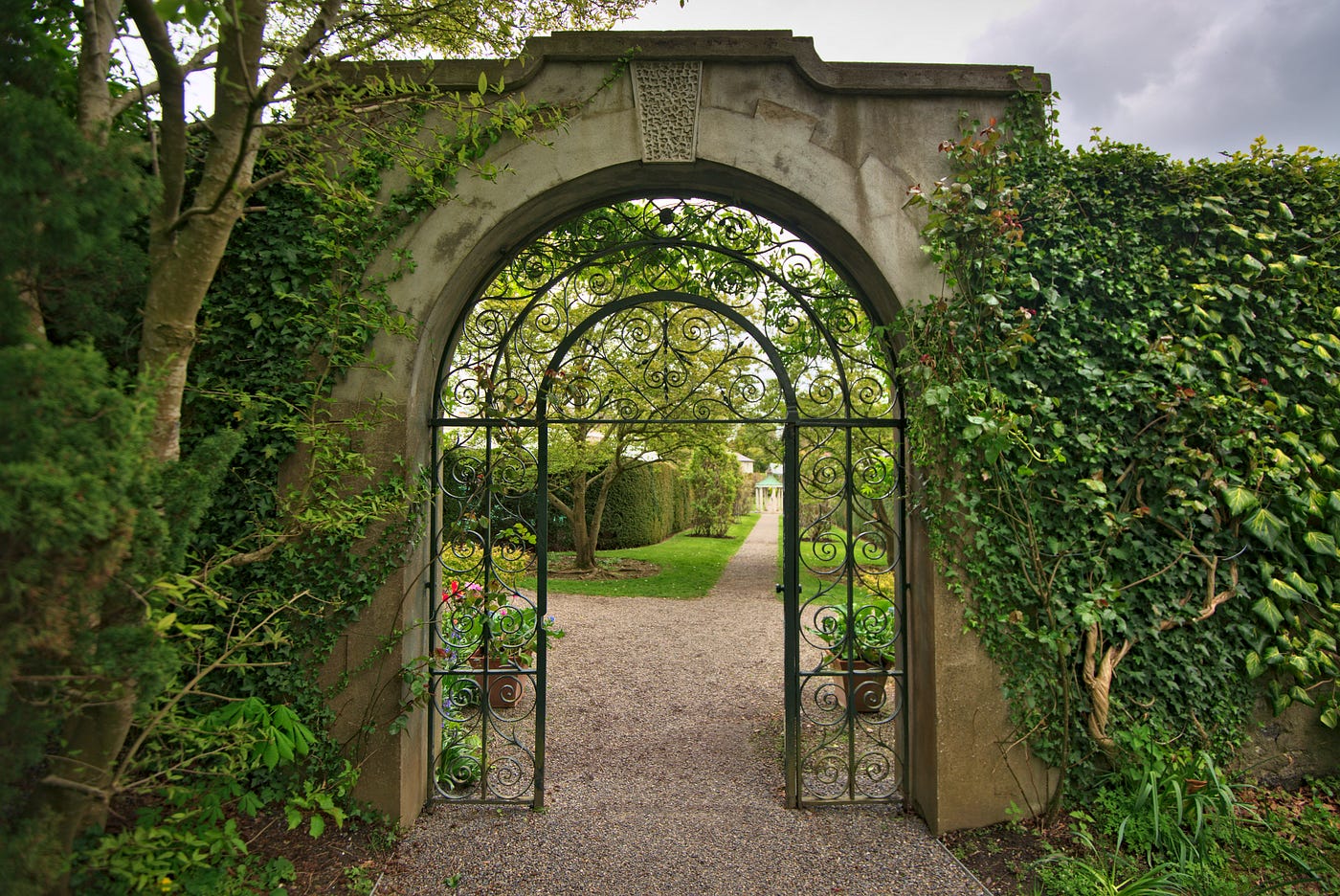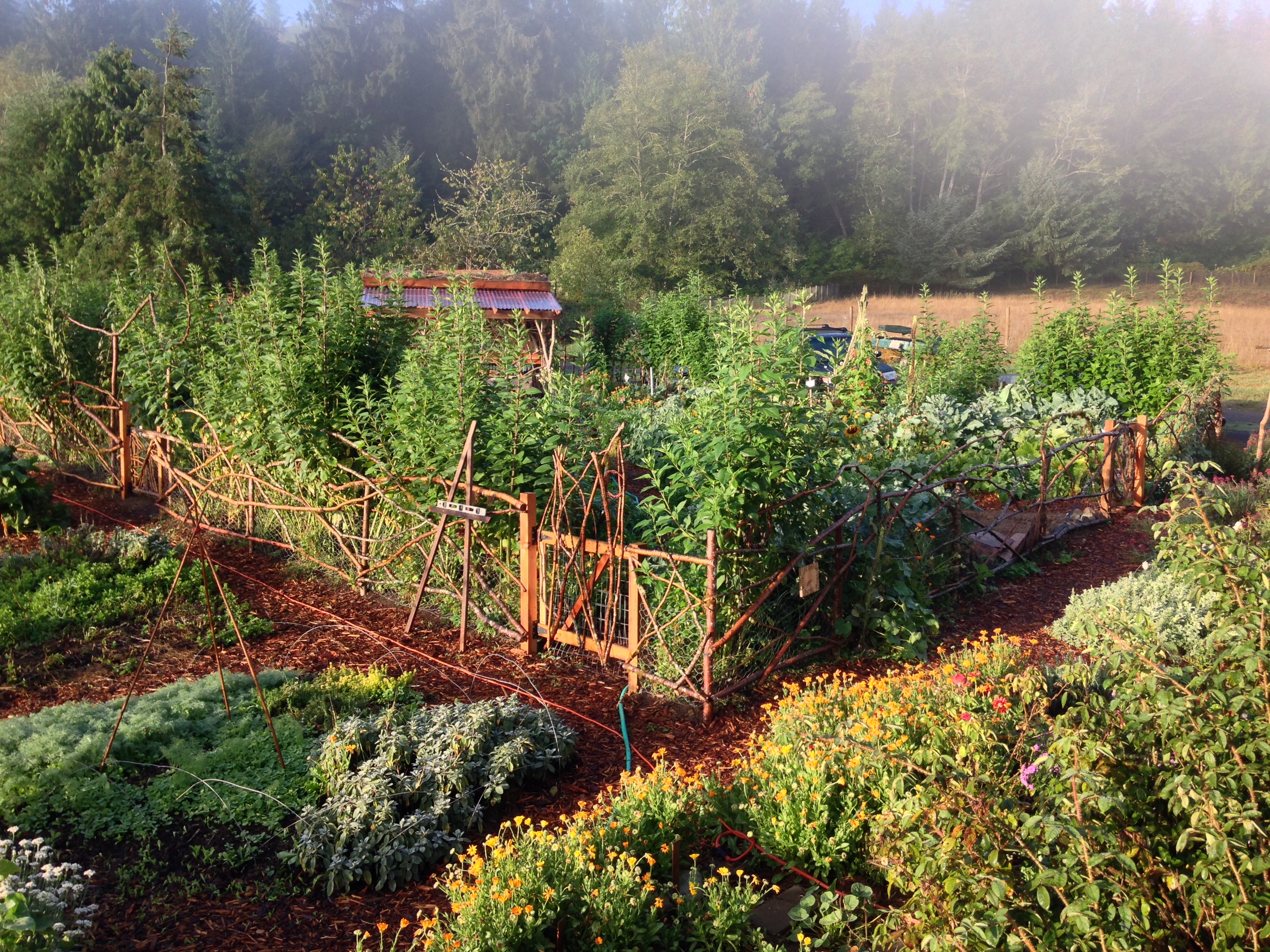

Articles
What Is Garden Of Gethsemane
Modified: January 5, 2024
Discover the significance of the Garden of Gethsemane in Christianity and explore its connection to the world of gardening. Unveil the rich spiritual and horticultural heritage behind this sacred site.
(Many of the links in this article redirect to a specific reviewed product. Your purchase of these products through affiliate links helps to generate commission for Storables.com, at no extra cost. Learn more)
Introduction
The Garden of Gethsemane is a well-known location that holds significant historical, religious, and cultural importance. Located at the foot of the Mount of Olives in Jerusalem, it has been a site of deep spiritual reflection and pilgrimage for centuries. This sacred garden is renowned for its association with the final moments of Jesus Christ’s life before his crucifixion.
The Garden of Gethsemane is mentioned in various religious texts, including the Bible, which has further fueled its significance among believers worldwide. With its serene atmosphere and lush greenery, it captivates visitors, drawing them into the depth of the events that unfolded within its sacred borders.
This article explores the historical background, biblical significance, location, and description of the Garden of Gethsemane. It also delves into the events that took place within its peaceful confines, its spiritual and religious importance, as well as its cultural and touristic significance.
So, let us delve into the rich history and profound significance of the Garden of Gethsemane.
Key Takeaways:
- The Garden of Gethsemane, with its ancient olive trees and serene ambiance, symbolizes Jesus’ final moments before crucifixion, inspiring deep spiritual reflection and pilgrimage for believers worldwide.
- This sacred sanctuary holds immense historical, religious, and cultural significance, inviting visitors to connect with the enduring power of faith, sacrifice, and the transformative nature of prayer.
Read more: What Gardeners Need
Historical Background
The Garden of Gethsemane has a fascinating historical background that dates back thousands of years. The name “Gethsemane” is derived from the Aramaic word meaning “oil press,” which reflects its past as an olive grove and an area used for processing olives into oil.
During the time of Jesus, the garden was part of a larger estate owned by a wealthy individual, possibly a disciple of Jesus or a friend of his. The estate included an olive orchard and a securely enclosed garden area, providing a peaceful and secluded location for quiet reflection and prayer.
The exact age of the Garden of Gethsemane is unknown, but it is believed to have existed even before the time of Jesus. Olive trees in the garden are estimated to be between 1,000 and 2,000 years old, adding to the sense of antiquity and reverence surrounding the site.
Throughout history, the Garden of Gethsemane has witnessed numerous significant events. It was a place frequented by Jesus and his disciples during their time in Jerusalem. Jesus often used the garden as a retreat for prayer and meditation, away from the crowds and the hustle and bustle of the city.
Moreover, the origins of the olive trees in the garden can be traced back to the time of Jesus, making them highly revered and symbolically connected to his presence. These ancient olive trees serve as a powerful and tangible link to the past, reminding visitors of the profound historical and spiritual significance of the location.
Over the centuries, the garden went through periods of destruction and restoration. It suffered significant damage during the Roman invasion of Jerusalem in 70 AD and was later rebuilt by Christian pilgrims. The garden underwent further transformations under various rulers, including the Byzantines and the Crusaders, who built churches and monasteries in the area.
Today, the Garden of Gethsemane stands as a testament to its enduring history and spiritual significance, attracting pilgrims and tourists from all over the world who seek to connect with the events that unfolded within its sacred confines.
Biblical Significance
The Garden of Gethsemane holds immense biblical significance and is mentioned in several accounts within the New Testament of the Bible. It is primarily associated with Jesus Christ’s final moments before his crucifixion, adding to its profound spiritual and religious meaning.
In the Bible, the Garden of Gethsemane is mentioned in the Gospels of Matthew, Mark, and Luke. These accounts describe how Jesus, after sharing the Last Supper with his disciples, went with them to the garden to pray. It was here that Jesus experienced deep anguish and sorrow, knowing that his crucifixion was imminent.
Matthew 26:36-46 recounts how Jesus went further into the garden and fell on his face, praying to his Father and expressing his distress. He asked his disciples to stay awake and keep watch, but they fell asleep. Jesus agonized in prayer, saying, “My Father, if it is possible, let this cup pass from me; yet not as I will, but as you will.” It was in the Garden of Gethsemane that Jesus ultimately surrendered to God’s will.
In Mark 14:32-42, a similar account is given, portraying Jesus’ overwhelming sorrow and loneliness. Jesus even asked his disciples, “Can you not watch one hour?” Jesus prayed fervently, and his sweat became like drops of blood falling to the ground, an indication of his deep anguish.
Furthermore, Luke 22:39-46 records Jesus’ prayerfulness and distress in the garden. It mentions Jesus being in agony and an angel coming to strengthen him. It also highlights Jesus’ resolve to submit to God’s plan, saying, “Father, if you are willing, remove this cup from me. Nevertheless, not my will, but yours, be done.”
The Garden of Gethsemane marks a crucial moment in Jesus’ life and ministry, symbolizing his obedience to God’s plan for the redemption of humanity. It highlights his humanity, showcasing his emotions and struggles as he faced the impending crucifixion and the weight of humanity’s sins.
For believers, the Garden of Gethsemane serves as a powerful reminder of Jesus’ sacrifice and his unwavering commitment to fulfilling God’s purpose. It is a place of reflection, gratitude, and deep reverence for the immense love and compassion demonstrated by Jesus in his final hours.
The biblical accounts of the Garden of Gethsemane emphasize the importance of prayer, surrender, and trust in God’s will, making it an enduring symbol of faith and devotion for Christians around the world.
Location and Description
The Garden of Gethsemane is situated on the eastern slope of the Mount of Olives, just across the Kidron Valley from Jerusalem’s Old City. It is a tranquil and picturesque garden that spans approximately 1,200 square meters (0.3 acres).
As visitors approach the garden, they are greeted by a breathtaking view of ancient olive trees, some of which are believed to be nearly 2,000 years old. These venerable trees, with their gnarled trunks and twisted branches, add to the mystical aura of the garden.
The garden itself is surrounded by a low stone wall and is divided into several smaller sections, each adorned with flowers, plants, and shrubs. It exudes a sense of serenity and peace, providing a perfect setting for quiet contemplation and prayer.
Walking through the paths within the garden, visitors will encounter various stone benches and kneeling areas for individuals or groups to pause and engage in reflection. These designated spots provide a space for meditation and connection with the profound spiritual energy that permeates the area.
Moreover, the Garden of Gethsemane offers stunning views of the surrounding landscape, including the spectacular panorama of the Old City of Jerusalem with its iconic sites such as the Western Wall and the Dome of the Rock.
Adjacent to the garden is the Church of All Nations, also known as the Basilica of Agony. This beautiful church, with its striking architecture and distinctive façade, stands as a prominent landmark in the vicinity of the garden. It houses a rock where Jesus is believed to have prayed during his time in Gethsemane, and visitors can touch and pay their respects to this sacred relic.
Overall, the Garden of Gethsemane is a place of profound beauty and tranquility that captivates visitors with its ancient olive trees, lush greenery, and serene atmosphere. It invites individuals of all faiths to experience a deep connection with history, spirituality, and inner reflection.
The Garden of Gethsemane is located at the foot of the Mount of Olives in Jerusalem. It is a significant site in Christianity, as it is where Jesus prayed before his crucifixion.
Events at the Garden of Gethsemane
The Garden of Gethsemane is intimately linked to a series of significant events that unfolded during Jesus’ final hours before his crucifixion. It serves as the backdrop for profound moments that have left an indelible mark on religious history.
Upon entering the garden, Jesus and his disciples, following the Last Supper, arrived at this secluded location to pray. It was here that Jesus asked a select group of disciples, Peter, James, and John, to stay with him while he went deeper into the garden to pray.
Within the garden’s peaceful confines, Jesus experienced extreme anguish and sorrow. He felt the weight of the impending crucifixion and the burden of the sins of humanity. In his vulnerable state, Jesus fell to his knees and poured out his heart to God, seeking strength, guidance, and reassurance.
While Jesus prayed, his disciples struggled to stay awake, succumbing to fatigue. The anguish and distress Jesus was experiencing were so intense that he sweated drops of blood, an uncommon phenomenon known as hematidrosis. This physical manifestation of stress emphasizes the depth of Jesus’ emotional turmoil.
During this time, Judas Iscariot, one of Jesus’ disciples, arrived with a group of guards and religious leaders to arrest Jesus. Judas identified Jesus to the authorities by giving him a kiss, known as the “Betrayal of Jesus.” This act not only marked the beginning of Jesus’ passion and crucifixion but also heightened the significance of the events unfolding within the Garden of Gethsemane.
As Jesus was being arrested, one of his disciples drew his sword and cut off the ear of a high priest’s servant. In response, Jesus instructed his disciple to put away his sword and healed the servant’s ear, demonstrating his commitment to nonviolence even in the face of adversity.
The events that transpired in the Garden of Gethsemane culminated in Jesus’ self-surrender and acceptance of God’s will. He willingly embraced his destiny as the sacrificial lamb for the salvation of humanity, ultimately leading to his crucifixion and resurrection.
Today, the Garden of Gethsemane stands as a tangible reminder of these critical moments in Jesus’ life and ministry. It serves as a place of contemplation, allowing visitors to connect with the deep spiritual significance of Jesus’ sacrifice and surrender in the face of immense suffering.
Events at the Garden of Gethsemane are a testament to the strength of faith, the power of prayer, and the unwavering commitment of Jesus to fulfill his divine purpose.
Read more: What To Plant In The Garden
Spiritual and Religious Importance
The Garden of Gethsemane holds immense spiritual and religious importance for believers worldwide. It is considered a sacred site that symbolizes profound moments of faith, sacrifice, and redemption.
For Christians, the Garden of Gethsemane is a place of spiritual pilgrimage and reflection, where they can connect with the final hours of Jesus’ life and witness the depth of his love and devotion. It serves as a reminder of Jesus’ humanity, his struggles, and his unwavering commitment to God’s will.
Visiting the garden allows believers to experience a deep sense of spirituality and empathy as they stand in the same location where Jesus wrestled with the weight of his impending crucifixion. It offers an opportunity for personal reflection, prayer, and contemplation, inviting individuals to examine their own faith and deepen their relationship with God.
The Garden of Gethsemane is also significant for its portrayal of Jesus’ obedience to God. In this garden, Jesus made the ultimate sacrifice, surrendering his own desires and fears to fulfill God’s plan of salvation. His prayers for “the cup to pass from him” serve as a potent example of complete surrender to the divine will.
Furthermore, the garden’s association with prayer underscores its spiritual significance. Jesus’ fervent prayers in Gethsemane inspire believers to approach God with humility, boldness, and trust. It serves as a reminder that even in times of deepest despair and anguish, prayer can bring solace, strength, and guidance.
Not only is the Garden of Gethsemane significant for Christians, but it also holds meaning for followers of other faiths. For Jews, it is a place of historical importance as part of the rich tapestry of Jerusalem’s religious and cultural heritage. The garden is a testament to the ancient olive groves that were prevalent in the region and serves as a reminder of the Jewish connection to the land.
Additionally, the Garden of Gethsemane is revered by Muslims who recognize Jesus as a prophet and hold deep respect for the holy sites associated with his life. It stands as a symbol of the shared reverence for the Abrahamic tradition and exemplifies the importance of faith, devotion, and perseverance.
Overall, the spiritual and religious importance of the Garden of Gethsemane extends beyond specific religious affiliations. It is a place that unites people from various backgrounds, cultures, and faiths in their recognition of the profound spiritual significance of Jesus’ sacrifice and the power of faith and prayer.
Cultural and Touristic Significance
The Garden of Gethsemane holds not only religious and spiritual significance but also cultural and touristic importance. It is a site that captivates visitors from all walks of life, attracting tourists, historians, and those interested in exploring the rich cultural tapestry of Jerusalem.
As a cultural landmark, the Garden of Gethsemane serves as a testament to the enduring legacy of the region’s history. The ancient olive trees, with their gnarled trunks and twisted branches, evoke a sense of awe and wonder, showcasing the beauty of nature and the passage of time. These trees, standing as witnesses to centuries of human history, form an integral part of the cultural fabric of the area.
The garden is also a place of artistic and literary inspiration. Throughout history, renowned artists, poets, and writers have been moved by the profound symbolism and tranquil atmosphere of the garden. Its depiction in paintings, literature, and cultural works contributes to its cultural significance, allowing people to explore and appreciate its beauty through various artistic mediums.
The Garden of Gethsemane is also a popular destination for tourists who visit Jerusalem. It is one of the most visited sites in the city, attracting pilgrims and travelers from different parts of the world. Visitors are drawn to the garden’s historical and spiritual significance, as well as its serene and tranquil ambiance.
Many tour companies offer guided visits to the garden, providing visitors with insights into its biblical and historical significance. Tourists have the opportunity to walk among the ancient olive trees, visit the Church of All Nations, and explore the serene pathways that evoke a profound sense of spirituality.
Visiting the Garden of Gethsemane allows travelers to immerse themselves in the rich cultural heritage of Jerusalem. It provides a unique opportunity to connect with the past, to witness firsthand the events that unfolded within its borders, and to gain a deeper understanding of the region’s religious and historical context.
Moreover, the garden’s close proximity to other iconic sites in Jerusalem, such as the Old City, the Western Wall, and the Dome of the Rock, makes it a must-visit location for tourists exploring the city’s rich tapestry of religious and cultural landmarks.
The Garden of Gethsemane is not only a place of significance for religious pilgrims but also a destination that offers a rich cultural and touristic experience. Its allure lies not only in its biblical associations but also in its ability to inspire awe, reflection, and exploration of the diverse cultural heritage of the region.
Conclusion
The Garden of Gethsemane is a place of profound significance, symbolizing the final hours of Jesus Christ’s life before his crucifixion. With its historical, religious, cultural, and touristic significance, it continues to captivate visitors from around the world.
As believers and tourists enter the garden, they are greeted by ancient olive trees and a serene ambiance that invites contemplation and reflection. It is here that Jesus experienced deep anguish and sorrow, surrendering to God’s will and exemplifying the power of faith and prayer.
The biblical accounts of Jesus’ prayers in the Garden of Gethsemane highlight his humanity, his unwavering commitment to God, and his ultimate sacrifice for the redemption of humanity. These events have left an indelible mark on religious history, inspiring countless individuals to seek solace, guidance, and spiritual connection within the garden’s sacred boundaries.
The cultural and touristic significance of the Garden of Gethsemane is also notable. Its ancient olive trees, architectural landmarks, and historical associations make it a destination that allows visitors to delve into the rich tapestry of Jerusalem’s cultural heritage. The garden serves as a place of artistic inspiration, an emblem of the region’s history, and an integral part of the city’s touristic allure.
Whether visited for spiritual pilgrimage, cultural exploration, or historical curiosity, the Garden of Gethsemane offers a profound experience that transcends religious and cultural boundaries. It stands as a testament to the enduring legacy of faith, sacrifice, and the power of prayer.
For believers, the garden serves as a poignant reminder of Jesus’ love, compassion, and unwavering dedication to God’s plan. It inspires individuals to deepen their own faith, to surrender to divine will, and to seek solace and strength through prayer.
In conclusion, the Garden of Gethsemane stands as a sacred sanctuary, a place of historical significance, and a symbol of faith, redemption, and spiritual connection. Whether drawn by religious devotion, cultural appreciation, or historical interest, visitors continue to be touched by the profound spiritual energy that emanates from this hallowed ground.
As we contemplate the events that unfolded within the Garden of Gethsemane, we are reminded of the enduring power of faith, the importance of surrendering to God’s will, and the transformative nature of prayer. It is a place that invites all to engage with their spirituality, to reflect on the meaning of sacrifice and redemption, and to draw closer to the divine.
Thus, the Garden of Gethsemane remains a sacred haven, inviting all who enter its borders to experience a deeper sense of connection, appreciation, and reverence for the profound spiritual journey that took place within its hallowed grounds.
Frequently Asked Questions about What Is Garden Of Gethsemane
Was this page helpful?
At Storables.com, we guarantee accurate and reliable information. Our content, validated by Expert Board Contributors, is crafted following stringent Editorial Policies. We're committed to providing you with well-researched, expert-backed insights for all your informational needs.















0 thoughts on “What Is Garden Of Gethsemane”